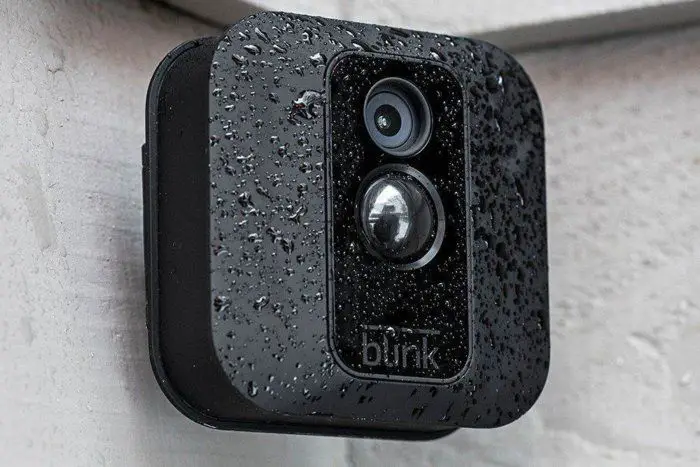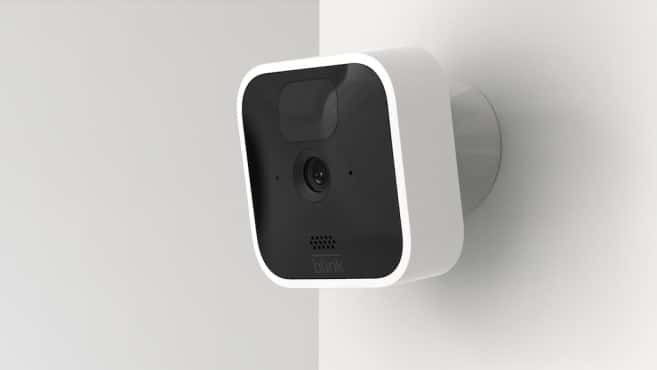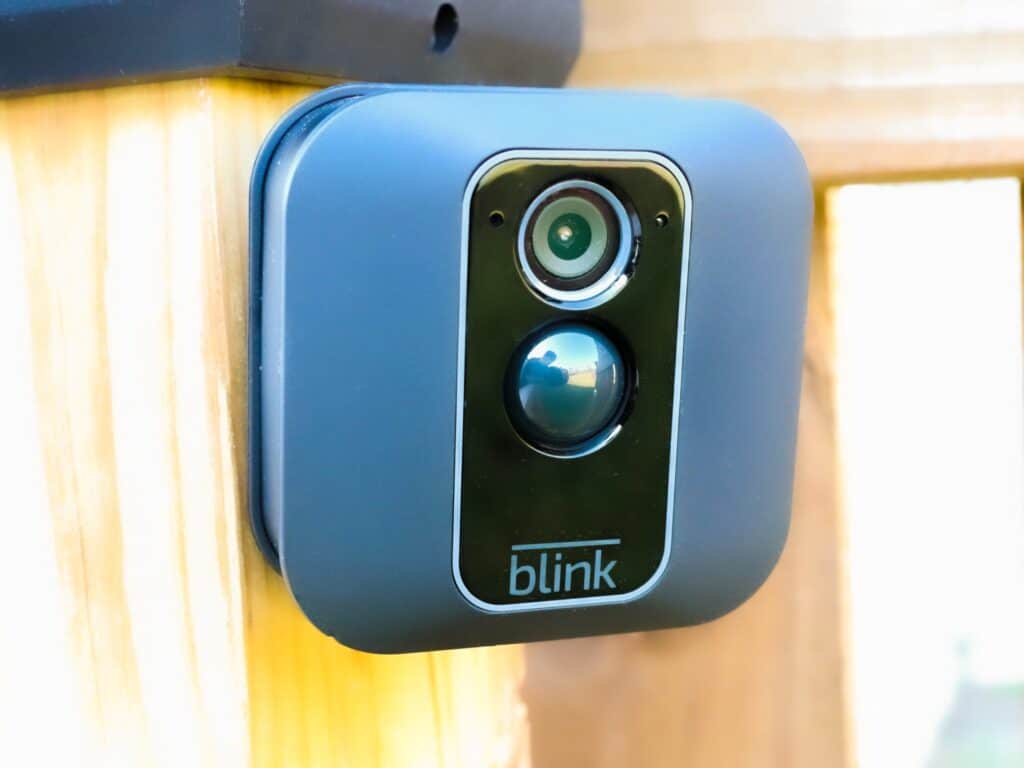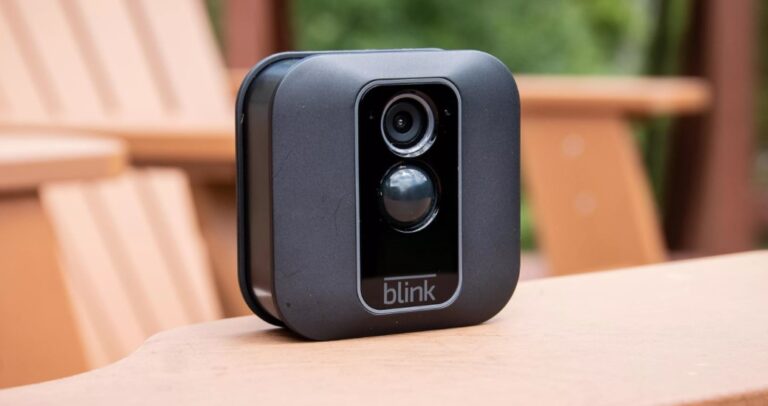Introduction
A reliable and user-friendly indoor camera system can provide peace of mind and enhance the safety of your living space. The Blink Indoor Camera, a versatile and easy-to-install device, can monitor your house while you’re gone.
The Blink Indoor Camera system is easy to install and protects your house quickly. This article will help you setup your Blink Indoor Camera, whether you’re tech-savvy or new to smart home gadgets.
The Blink Indoor Camera system must be understood. Amazon’s Blink Indoor Camera records HD footage, detects activity, and streams live via its mobile app. For indoor surveillance, this wireless camera is tiny, easy to position, and runs on a long-lasting battery.

Do indoor Blink cameras need to be plugged in?
Blink Mini indoor camera features. The Blink Mini isn’t high-end, but it has everything you need from an indoor camera. The Blink Mini is basically the same as Blink’s other security cameras. Except that, while Blink’s other cameras run off batteries, the Blink Mini has a power cord you plug into the wall.
Blink indoor cameras do not need power outlets. They use lithium batteries from the camera equipment. These batteries let you place the camera anywhere within your home’s Wi-Fi network without a power supply.
Camera usage, motion detection frequency, and Wi-Fi connection strength affect Blink interior camera battery life. Blink cameras are designed to improve battery economy, so they can last up to two years under normal use. This long battery life lets you monitor without changing batteries.
The Blink app will remind you to replace them. Opening the camera’s battery compartment and replacing the batteries is easy. To maintain surveillance, keep spare batteries on hand.
The Blink Sync Module 2, a central hub for Blink cameras, is available for the battery-powered alternative. This power outlet-connected module improves camera communication and range. If you have several cameras or a weak Wi-Fi signal, the Blink Sync Module 2 can improve your Blink indoor camera system.
Are Blink cameras Wi-Fi?
All Blink cameras require a 2.4 GHz Wi-Fi Internet connection. The cameras use Wi-Fi to send images and notifications so you can view them from the Blink app on your mobile device. At minimum, Blink systems need a connection of at least 2 Mbps upload speed.
Blink cameras connect to your home’s Wi-Fi network to transmit data, receive commands, and stream live video. This wireless connection eliminates the need for physical cables, making the installation process easier and more flexible. With Wi-Fi connectivity, you can position the cameras wherever they are needed within the range of your home’s Wi-Fi signal.
Blink cameras will be asked to join to your home Wi-Fi network during setup. The Blink app scans the camera’s QR code to connect to the Wi-Fi network. The camera secures and encrypts data transmission once connected.
The Blink mobile app controls your Blink camera system, letting you browse live feeds, change settings, receive motion detection alerts, and review recorded clips. Your home’s Wi-Fi connects the app to the Blink servers.
Blink cameras are dependent on the strength and stability of your home’s Wi-Fi signal. A weak or unstable Wi-Fi connection may result in intermittent camera connectivity, delayed notifications, or reduced video streaming quality.
Can I set up a Blink camera without Wi-Fi?
A3: Setting up a Blink camera without Wi-Fi is very simple. All you need to do is connect the Blink Sync Module to the camera, insert the AA batteries, and then connect the Sync Module to the Blink app. From there, you can configure the camera settings and begin using the camera.
Blink camera, the initial step involves connecting it to your home’s Wi-Fi network. This connection is necessary for the camera to communicate with the Blink cloud servers and the Blink mobile app. During the setup process, you will be prompted to scan the camera’s QR code using the Blink mobile app, which contains the information needed to establish a secure and encrypted Wi-Fi connection.
The Wi-Fi connection plays a crucial role in the functionality of Blink cameras. It enables features such as live video streaming, motion detection alerts, and the ability to customize camera settings remotely. With Wi-Fi, you can monitor your camera feeds, review recorded clips, and receive notifications from anywhere with an internet connection.
Using a Blink camera system requires a Wi-Fi network. The cameras use Wi-Fi communication to eliminate cords and allow variable camera placement within the Wi-Fi signal area.
Can you mount Blink camera to wall?
Depending on the orientation of where the camera will live, you will use one of the two mounting points: The vertical mounting point (for walls or other vertical surfaces) is located above the USB port at the rear of the camera.
Camera Placement: Before mounting the camera, carefully consider the area you want to monitor. Look for a location that provides a clear view of the intended area, such as entryways, hallways, or rooms of interest. Ensure the camera is positioned at an optimal height and angle to capture the desired footage.
Mounting Options: Blink cameras come with a versatile mounting bracket that allows for easy installation on a wall. The mounting bracket typically consists of a base plate that attaches to the wall and a ball joint that securely holds the camera. The ball joint provides flexibility in adjusting the camera’s angle to achieve the desired field of view.
Mounting Steps: Start by selecting the appropriate location on the wall where you want to mount the camera. Use a stud finder or other suitable methods to locate and mark the wall studs for added stability. Then, attach the base plate of the mounting bracket to the wall using screws or other hardware suitable for the wall surface. For stability, secure the base plate. After attaching the base plate, insert the camera into the ball joint and adjust the angle.
Cable Management: If the Blink camera is powered by batteries, cable management may not be a concern. Consider cable location if you use the Blink Sync Module or a wired power source for your camera. To hide cables, run them along the wall or utilize cable management solutions.

Where is the best place to put a Blink camera?
Ideally, the camera should be mounted in an area with a clear view of any points of entry. This could be the front or back door, windows, and garages. Additionally, the camera should be mounted in an area with good lighting and not blocked by trees or other obstacles.
Entry Points: One of the primary considerations is to position the camera near entry points such as doors, windows, or any other potential access points. Placing a camera near these areas provides a clear view of anyone entering or exiting the premises, enhancing the security of your home.
Line of Sight: Ensure that the camera has an unobstructed view of the area you want to monitor. Avoid placing the camera behind objects like plants, curtains, or furniture that may block its field of view. A clear line of sight will ensure that the camera captures the necessary footage without any hindrance.
Height and Angle: Position the camera at an appropriate height and angle to capture the desired field of view. Mounting the camera at an elevated height can help increase its coverage and reduce the risk of tampering. Experiment with different angles to find the optimal position that provides the best view of the monitored area.
Coverage Area: Consider the specific areas you want the camera to monitor. If you have multiple entry points or sections of interest, it may be necessary to install multiple cameras or position a single camera strategically to cover those areas effectively. This ensures comprehensive coverage of your home or property.
How long do Blink cameras last?
Two years
According to Blink, their cameras can last up to two years on a single set of AA lithium batteries. However, this estimate is based on the cameras being used for an average of 40,000 seconds per month, which equates to about 1,333 seconds per day.
Battery Optimization: So, here’s the deal with Blink cameras: you can totally use them without shelling out a monthly fee. But let’s be real, they’re a bit like the plain Jane of the surveillance world. While other brands like Ring, Arlo, and Google Nest are throwing in all these fancy features for free, Blink is just like, “Nah, we’re good with keeping it simple.” So, if you’re cool with a no-frills experience, go ahead and rock that Blink camera. But if you’re looking for a little more pizzazz, you might want to check out those other brands. Just saying!
Motion-Based Recording: Blink cameras utilize motion detection technology to trigger video recording when motion is detected in the camera’s field of view. By activating recording only when necessary, the camera conserves battery power and minimizes unnecessary usage. Adjusting motion detection sensitivity and recording duration settings can further optimize battery life based on your specific needs.
Wi-Fi Communication: Blink cameras use Wi-Fi to transmit data, communicate with the Blink mobile app, and access cloud storage. While Wi-Fi connectivity is essential for the camera’s functionality, it can also impact battery life. Maintaining a stable and strong Wi-Fi signal ensures efficient data transmission, reducing the strain on the camera’s batteries.
Battery Replacement: When the batteries in a Blink camera start to run low, the Blink mobile app notifies you, indicating that it’s time to replace the batteries.
Is Blink indoor camera free?
Blink’s free plan lacks features compared to Ring, Arlo, and Google Nest’s. Still, it’s a nice way to save some cash when you don’t want cloud video storage.
Free Features: The Blink indoor camera system provides several key features free of charge. These include live streaming, motion detection, and push notifications. With the free version, you can access live video feeds from your cameras via the Blink mobile app, receive motion detection alerts on your smartphone or other devices, and review recorded video clips.
Cloud Storage: By default, Blink cameras store video clips locally on the camera itself. However, for added convenience and security, Blink offers cloud storage options through their Blink Subscription Plans. These membership options provide perks to Blink interior cameras.
Blink Subscription Plans: Blink offers various subscription plans for users who want expanded features and cloud storage options. These plans include the Basic Plan, Plus Plan, and the Premium Plan, each with different features and storage capacities. Subscribing to these plans provides benefits such as cloud storage for recorded videos, extended warranty, and enhanced customer support.
Additional Features: The Blink Subscription Plans offer additional features, such as advanced motion detection zones, enabling you to customize specific areas for motion detection, and the ability to create custom clips to save and share. These features provide more control and flexibility in managing your camera system.
Can blink indoor cameras be plugged in?
All Blink cameras can be powered via a Micro USB cable and adapter via the USB connection on the back. Use 5V/1A USB power adapters safely. Mini cameras are USB-powered and include a cable and power adaptor.
Continuous Power: By connecting the camera to a power source, you can have uninterrupted power supply, eliminating concerns about battery life and the need for periodic battery replacements or recharging.
Extended Recording: With a plug-in power option, Blink cameras can potentially record longer video clips or continuously record without the time constraints imposed by battery life.
No Battery Management: Using a power adapter removes the need to monitor battery levels and replace or recharge batteries periodically. This can be particularly beneficial for users who prefer a more maintenance-free setup.
Cost Savings: Opting for a plug-in power option can potentially save money on battery replacements over time, as you won’t need to purchase new batteries as frequently.
Blink’s camera-specific AC power adaptor. This durable power adapter plugs into the camera’s micro-USB connector. Plugging the AC power adapter into a normal electrical outlet keeps the camera powered.
The battery compartment of blink cameras allows easy access to replaceable lithium batteries. To maintain surveillance, keep spare batteries on hand.

Conclusion
The Blink Indoor Camera system, ensuring that you can set it up efficiently and start protecting your home in no time. Whether you’re a tech-savvy individual or a beginner in the world of smart home devices, this guide will provide you with the knowledge and instructions necessary to successfully install your Blink Indoor Camera.
Before we delve into the installation process, it’s essential to have a basic understanding of the Blink Indoor Camera system. Developed by Amazon, the Blink Indoor Camera offers HD video recording, motion detection, and live streaming capabilities, all accessible through the Blink mobile app. This wireless camera is compact, easy to position, and operates on a long-lasting battery, making it an ideal choice for indoor surveillance.
Throughout this guide, we will cover all the essential steps, including unboxing the camera, connecting it to your home’s Wi-Fi network, positioning it effectively, and navigating the Blink mobile app to optimize your camera’s functionality. By following these instructions, you’ll have your Blink Indoor Camera up and running, allowing you to monitor your home, family, and valuable belongings effortlessly.

